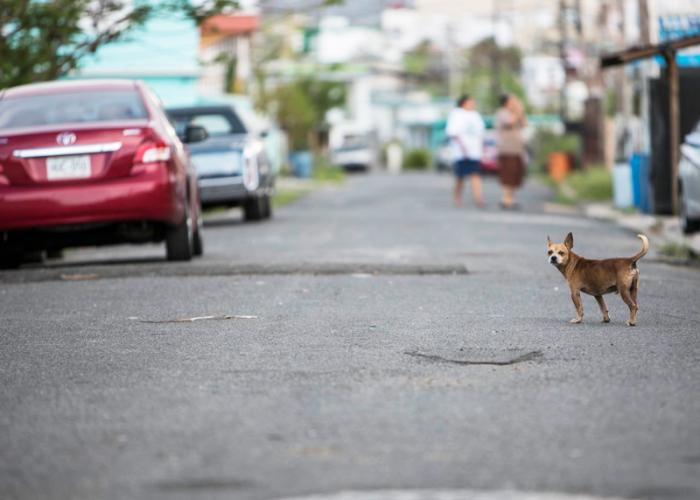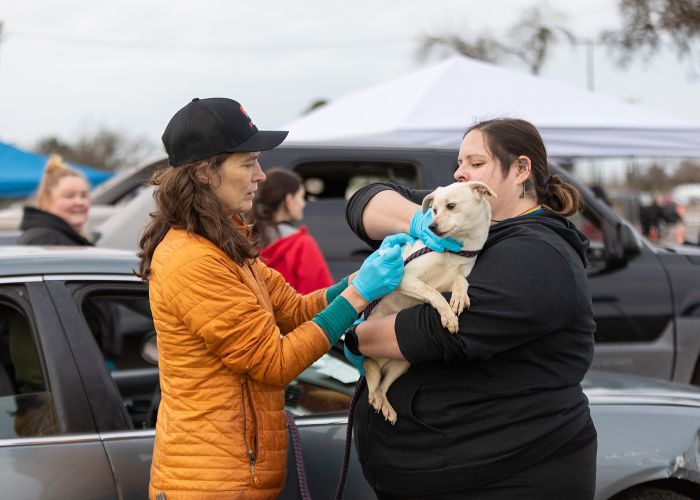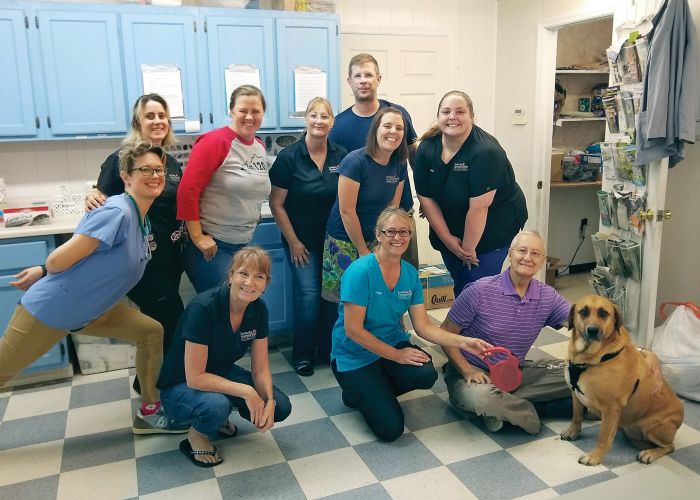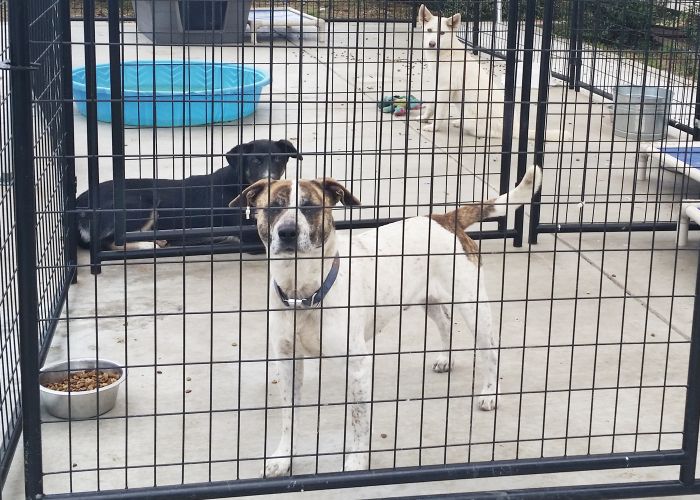Career spotlight: Wildlife rehabilitators
Communities and animal welfare organizations prize expert wildlife rehabilitators, who are few and far between
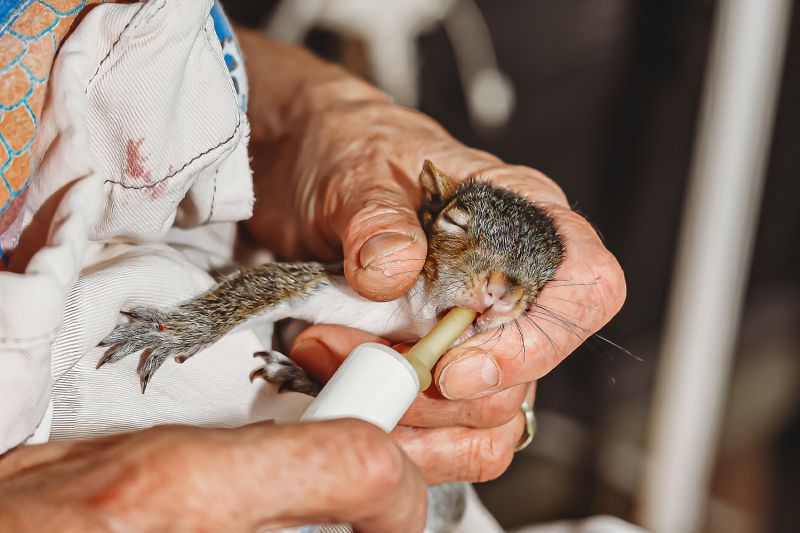
For Judy Holzman, wildlife rehabilitation was “a hobby that got out of hand,” she jokes. Founder of All Creatures Great & Small, a home-based, all-volunteer nonprofit in Maryland, 77-year-old Holzman has been helping wildlife for 30 years, with no plans to stop any time soon. She started out by volunteering at a local wildlife sanctuary four hours a week, then went on to help home-based rehabilitators.
After a few years, she obtained her own state and federal permits, eventually incorporating as a charitable nonprofit in 2005; most of her donors are grateful members of the public who, at some point or another, brought her a wild animal to rehabilitate. She currently houses around 30 birds, rabbits and more in rooms that were once her study and her oldest daughter’s childhood bedroom. (Her daughter, a former journalist, once wrote an article about how “she came home for a visit one time and knew that things had changed, because where her bed used to be was a snarling possum in a cage,” says Holzman.)
Living with wild animals can have its challenges, but “you see how starlings interact with you; you see how squirrels play with each other; you see how blue jays will beg. You see them up close. You see behaviors that you would never see out in the wild,” says Holzman, whose favorite animals to rehabilitate are squirrels.
Like most longtime wildlife rehabbers, Holzman doesn’t receive a salary. But it’s possible to get paid jobs in the field: Many larger shelters have staffers who specialize in wildlife, and the skills can be a steppingstone to other careers, such as a humane wildlife conflict manager, a park or forest ranger, or a veterinary technician at a wildlife rehabilitation center.
Lauren Crossed, wildlife program manager at Humane Rescue Alliance in Washington, D.C., is close to obtaining her own wildlife rehabilitation certification, which takes two years in the District. She recently received a call from a jogger who ran over Francis Scott Key Bridge every day and was worried that a goose underneath it was stuck. Although the lower bridge was only accessible by boat, HRA’s relationship with a local fire department meant Crossed soon found herself setting out on the Potomac River with several firefighters.
“There’s really an endless supply of need, especially as population grows and people are moving into more rural areas, more forested areas. There are just more interactions with wildlife,”
—Jennifer Riley, director of veterinary services, Blue Ridge Wildlife Center
“That’s the first time I got to ride on a high-powered speed boat to go check on a goose,” says Crossed with a laugh. To the jogger’s relief, the goose was simply a mom who’d found a good nesting spot. But in a society that often ignores or rejects the presence of wild animals, the entire event was remarkable, from the jogger’s worry about a goose to the support network available to help the goose.
HRA partners with local wildlife center City Wildlife, which has an on-staff wildlife veterinarian, but such wildlife centers are relatively rare: Although there are three wildlife-specific clinics in Virginia, for example, in parts of Wyoming and Montana it can be a 10-hour drive between clinics.
“There’s really an endless supply of need, especially as population grows and people are moving into more rural areas, more forested areas. There are just more interactions with wildlife,” says Jennifer Riley, director of veterinary services at Blue Ridge Wildlife Center in Virginia, a teaching clinic that trains wildlife veterinarians and provides wildlife education programs to the public. In the spring and summer, she says the clinic receives more than 150 calls a day requesting help with orphaned or injured wildlife.
Whether you’d like to add wildlife knowledge to your resume or simply supercharge your volunteer efforts, becoming a qualified wildlife rehabilitator can change the fate of wild animals in your area. So how can you become one of these critically important helpers, and what does it involve?
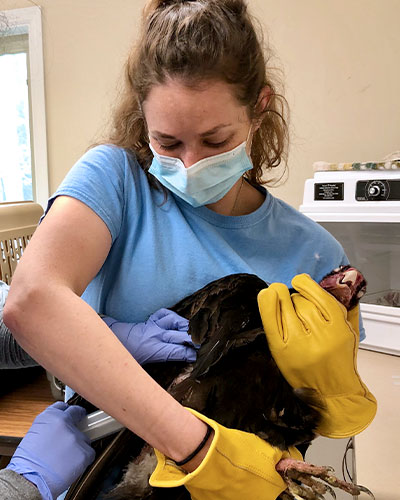
Do your research
Wildlife rehabilitation requires specialized training, says Dave Pauli, HSUS wildlife protection program manager, and in many cases, it’s illegal to attempt to rehabilitate animals without it. The job can also be subject to state and county regulations governing which species can be rehabilitated, as well as “an emotional and fiscal drain,” says Pauli, with many rehabilitators putting in 50- to 70-hour weeks caring for animals who may ultimately be unable to survive on their own. Holzman may feed hatchlings every 30 minutes until sundown or stay up all night feeding baby squirrels. So, it’s no wonder that states like Texas and Tennessee report having just 60 wildlife rehabilitators each, New Hampshire 25, and Oregon 18.
But both Holzman and Crossed note that many rehabilitators set boundaries on their time and energy by working with just one type of animal, and even taking just a few animals a season can be “super helpful” to wildlife centers, says Riley. After initially receiving phone calls at home 24 hours a day, Holzman set up a dedicated phone line for the public and turns off the ringer at 5 p.m. each day, and she only takes on new animals if she feels confident that she has the knowledge to properly care for them, the space and the time. “If I take too many and I burn out, I won’t be helping anybody,” she explains.
Outside of the individual animals saved, “so many people are so grateful for what we do and so grateful for the advice that we’re giving …” says Riley. “Obviously, these animals are not bringing themselves in, so a lot of what we do is really giving the public an option of what they can do, helping them, taking care of a situation that was causing them stress or anxiety. It’s a good feeling to help people, too.”
To get started in the field, Riley suggests first calling your nearest wildlife center and asking for guidance on training, regulations and more. “Most wildlife centers will be very open to explaining [the process] because they all want more home rehabbers in their area that can help them out, so it really benefits both parties,” she explains.
Your state wildlife department can also serve as a resource, notes Pauli, and several organizations offer in-person or online rehabilitation courses. Prior to the pandemic, Holzman attended conferences held by groups like the National Wildlife Rehabilitators Association and the Maryland Wildlife Rehabilitators Association, and since the pandemic, she's attended the online conference held by the NY Wildlife Rehabilitation Council.
“There’s a lot of networking among rehabbers,” she says. “I learned a lot from the classes, but also [from] just talking with other rehabbers.”
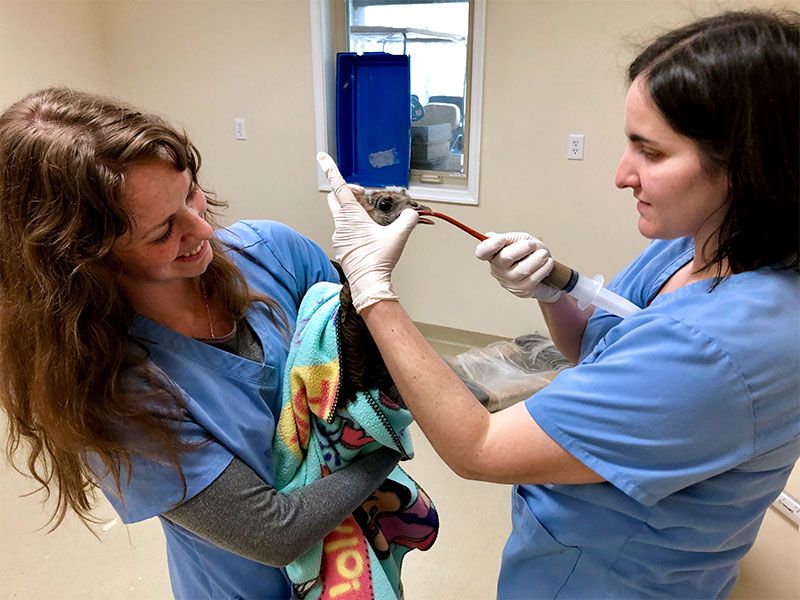
Be prepared to educate
Most animals brought to wildlife centers are infants, but many of them don’t belong there, says Riley. That’s because the well-meaning public often accidentally kidnaps kits, fledglings and other youngsters due to misconceptions about wild animals. (For example, it’s normal for does and vixens to leave fawns and kits unsupervised for several hours.)
“Easily when it comes to baby season, 90% of our calls we tell them to leave [the animal] there,” Riley says. Otherwise, rehabs can “fill up really quickly with babies that aren’t actually orphans.”
Among the sick or injured wild animals brought to her clinic, nearly all are victims of car and window strikes, cat attacks, lead exposure, gunshot wounds or other human-caused problems, says Riley, and Crossed adds that many calls HRA receives are from people who are simply uncomfortable with animals exhibiting natural behaviors around them, such as raccoons eating trash or groundhogs making holes.
“The reality is we deal a lot more with people than we do with animals. And you do a big disservice to the animals if you’re not able to interact with people and explain things and advocate for the animals in a way that you’re not talking down or demeaning.”
—Lauren Crossed, wildlife program manager, Humane Rescue Alliance
“I really enjoy shedding light on why the animals are exhibiting a certain behavior,” says Crossed. By offering simple explanations and solutions, she often follows up and finds that she prevented the euthanasia or deadly relocation of the animal by a wildlife control company.
“The reality is we deal a lot more with people than we do with animals. And you do a big disservice to the animals if you’re not able to interact with people and explain things and advocate for the animals in a way that you’re not talking down or demeaning.”
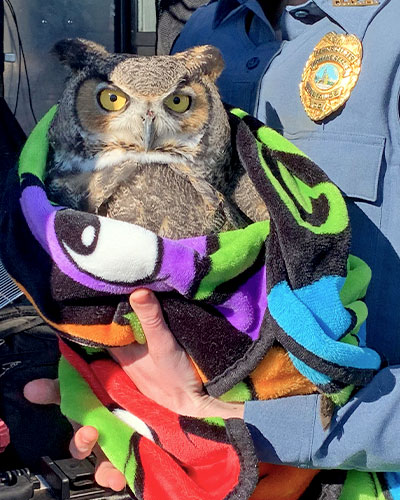
Keep wild animals wild
In exceptional circumstances, wildlife sanctuaries and centers do house animals long-term, sometimes using them as “ambassadors” for their species. But the No. 1 principle of wildlife care is to keep the animal wild.
Unlike companion animal care, “rehab’s goal is to get the wild animal back out there, not to simply save every animal,” regardless of if they’ll need lifelong human intervention, explains Pauli. He says that many people like the idea of snuggling baby wildlife, but those who care for wild animals must ensure they will thrive alongside others of their kind. That means housing wild animals for as short a time as possible and handling them as little as possible. It also means that sometimes the kindest course of action is humane euthanasia, says Riley.
“The most encouraging thing is when you have something that’s injured or sick and it does recover, and of course it’s fun,” explains Holzman. “But I do explain to [potential volunteers] that they have to be OK with death. I tell myself, ‘If we can fix their bodies, we release their bodies. If we can’t fix their bodies, we release their souls.’”
Nonetheless, last year, Blue Ridge treated 3,331 patients and had a 78% survival rate. Each raptor, songbird, rabbit, turtle, snake, toad or other wild animal released has moral (it’s their world, too) and ecological significance.
“All health is interconnected,” says Riley, whose favorite patients are vultures, who have bold personalities and prevent the spread of disease by removing dead animals. “When we’re protecting wildlife health, we’re protecting human health.”
“Each one has its own personality, things that you’d never know if you didn’t see them in a rehab setting,” says Holzman, describing squirrels snuggling together and lounging on tiny hammocks sewed by volunteers.
“Every year by August I say I’m done,” she says. But somehow, each year, she finds herself taking in baby squirrels again.


